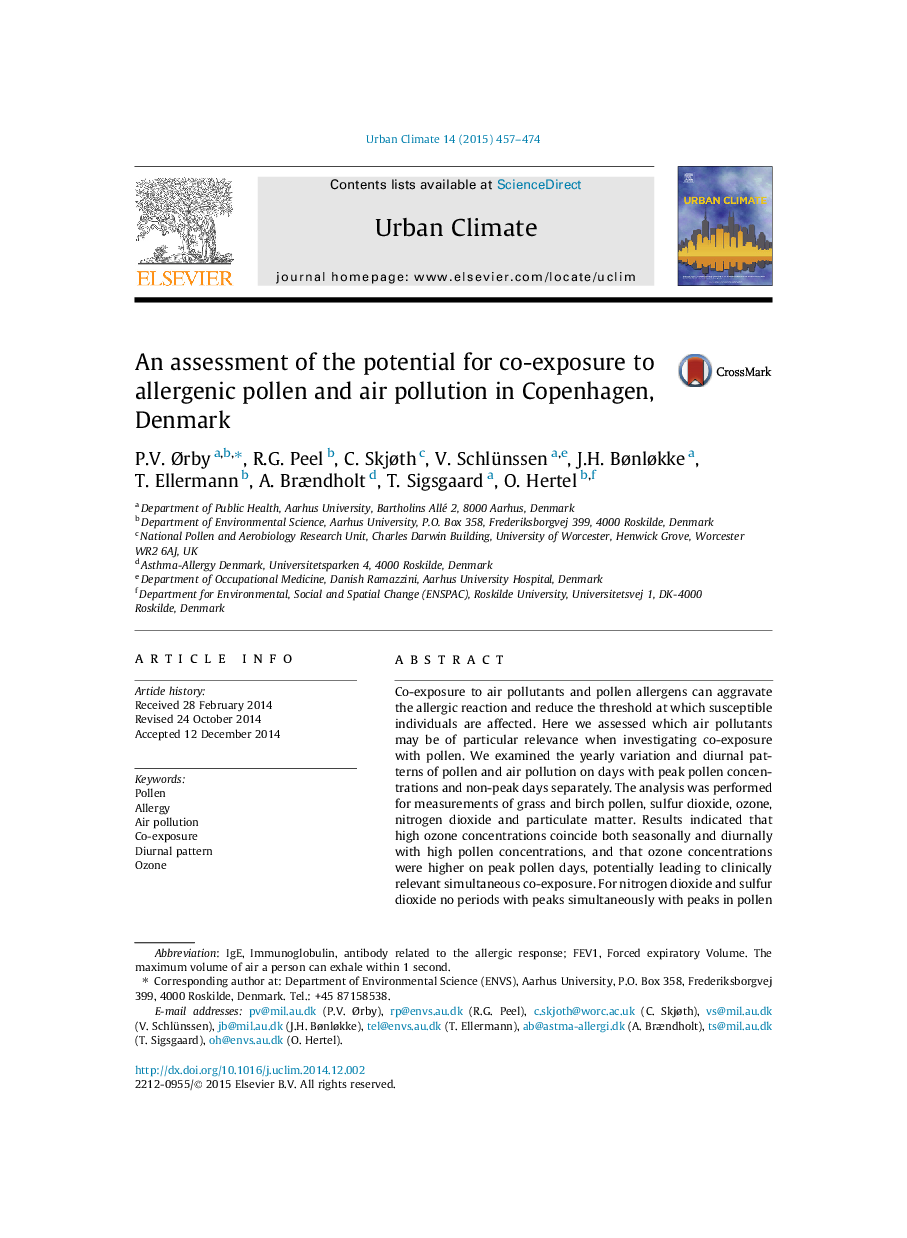| کد مقاله | کد نشریه | سال انتشار | مقاله انگلیسی | نسخه تمام متن |
|---|---|---|---|---|
| 143687 | 163459 | 2015 | 18 صفحه PDF | دانلود رایگان |
• Co-exposure to pollen and air pollutants is known to aggravate allergic responses.
• Patterns of pollen and air pollutants were compared at various timescales.
• A tendency for coincidence of high pollen and O3 concentrations was identified.
• Weak or no coincidence was found between SO2, NO2, PM10 or PM2.5 and pollen loads.
• Ambient ozone concentrations should be considered when assessing pollen exposure.
Co-exposure to air pollutants and pollen allergens can aggravate the allergic reaction and reduce the threshold at which susceptible individuals are affected. Here we assessed which air pollutants may be of particular relevance when investigating co-exposure with pollen. We examined the yearly variation and diurnal patterns of pollen and air pollution on days with peak pollen concentrations and non-peak days separately. The analysis was performed for measurements of grass and birch pollen, sulfur dioxide, ozone, nitrogen dioxide and particulate matter. Results indicated that high ozone concentrations coincide both seasonally and diurnally with high pollen concentrations, and that ozone concentrations were higher on peak pollen days, potentially leading to clinically relevant simultaneous co-exposure. For nitrogen dioxide and sulfur dioxide no periods with peaks simultaneously with peaks in pollen loads was identified, and concentrations were below potential thresholds for adjuvant effects to the allergic reaction. For particulate matter no simultaneous peaks in diurnal or seasonal concentrations were identified, however concentrations were higher on peak pollen days compared with non-peak days. When considering co-exposure effects from pollen and pollutants, ozone appears to be the most relevant pollutant to further examine for effects of simultaneous co-exposures.
Journal: Urban Climate - Volume 14, Part 3, December 2015, Pages 457–474
